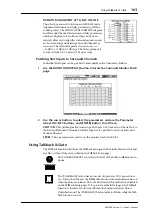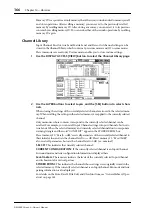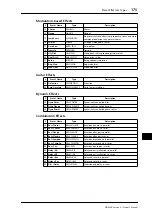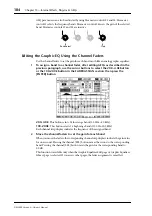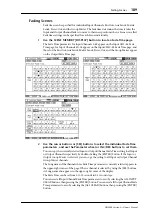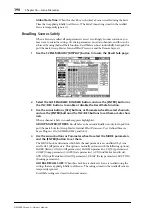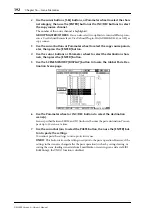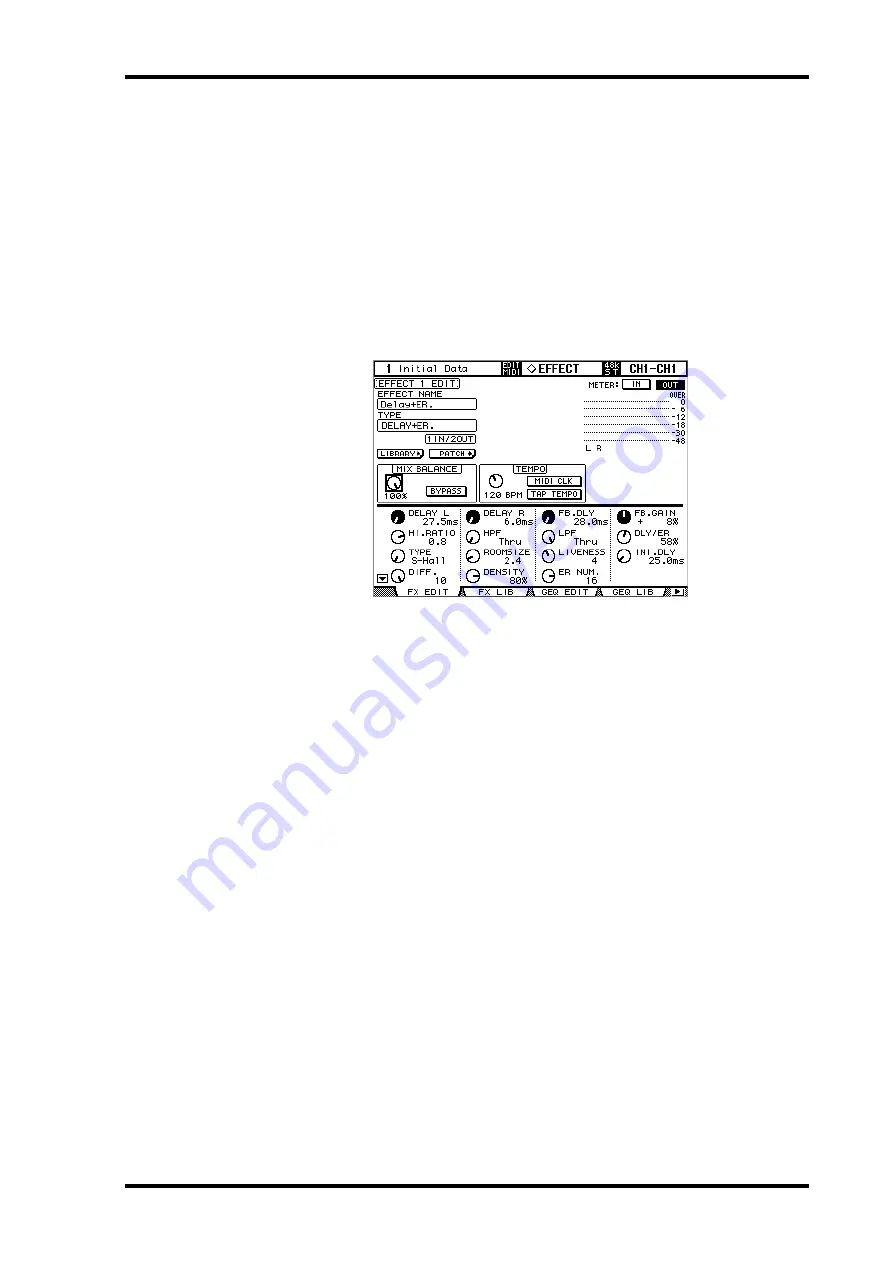
Editing Effects
177
DM2000 Version 2—Owner’s Manual
Editing Effects
The internal effects processors can be edited as follows.
1
Press the EFFECTS/PLUG INS [INTERNAL EFFECTS] button.
2
Use the EFFECTS/PLUG INS [1–8] buttons to select the internal effects pro-
cessors.
3
Use the EFFECTS/PLUG INS [DISPLAY] button to locate the Effects Library
page, and recall a preset effects memory that contains the effects type that
you want.
See “Effects Library” on page 168 for more information.
4
Use the EFFECTS/PLUG INS [DISPLAY] button to locate the Effects Edit page.
The available effects parameters depends on the effects type currently selected. See page 310
for detailed parameter information.
5
Use the cursor buttons to select the parameters, and use the Parameter
wheel, INC/DEC buttons, or [ENTER] button to set them.
EFFECT NAME:
This is the name of the currently-recalled Effects memory.
TYPE:
This is the effects type used in the currently-recalled Effects memory. Its I/O config-
uration is shown below this.
LIBRARY:
Select the LIBRARY button, then press [ENTER] to display the Library page for
the selected effects processor. See “Effects Library” on page 168 for more information.
PATCH:
Select the PATCH button, then press [ENTER] to display the Effects Input/Out-
put Patch page, which enables you to patch internal Effects processor inputs and outputs.
See “Patching Effects Inputs and Outputs” on page 78 for more information.
MIX BALANCE:
This is used to set the balance between the wet and dry signals. When set
to 0%, only the dry signal is heard. When set to 100%, only the wet signal is heard.
BYPASS:
This button is used to bypass the currently selected Effects processor.
TEMPO:
The TEMPO section displays TEMPO parameters for delay and modula-
tion-based effects. These TEMPO parameters calculate and set the delay time for delay
effects, or the modulation frequency for modulation effects, relative to the specified tempo
and note duration. Use these parameters along with the SYNC and NOTE parameters.
When you turn on the SYNC parameter, the DM2000 recalculates the delay time or mod-
ulation frequency based on the TEMPO parameter value (tempo) and the NOTE parameter
value (note). For example, if the TEMPO parameter is set to 120BPM and the NOTE
parameter is set to an eighth note, turning on the SYNC parameter sets the delay time to
250msec and the modulation frequency to 0.25Hz.

